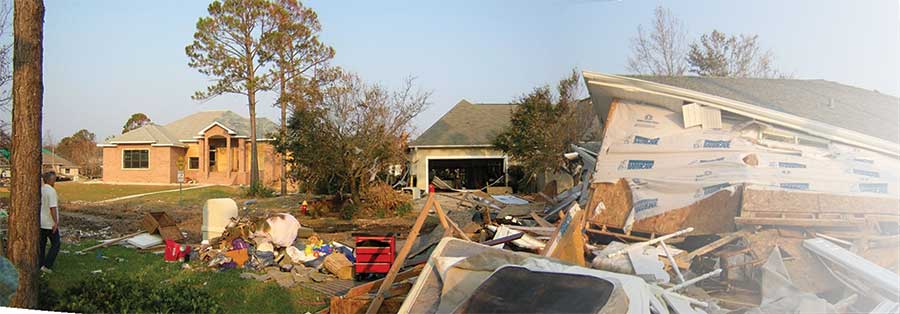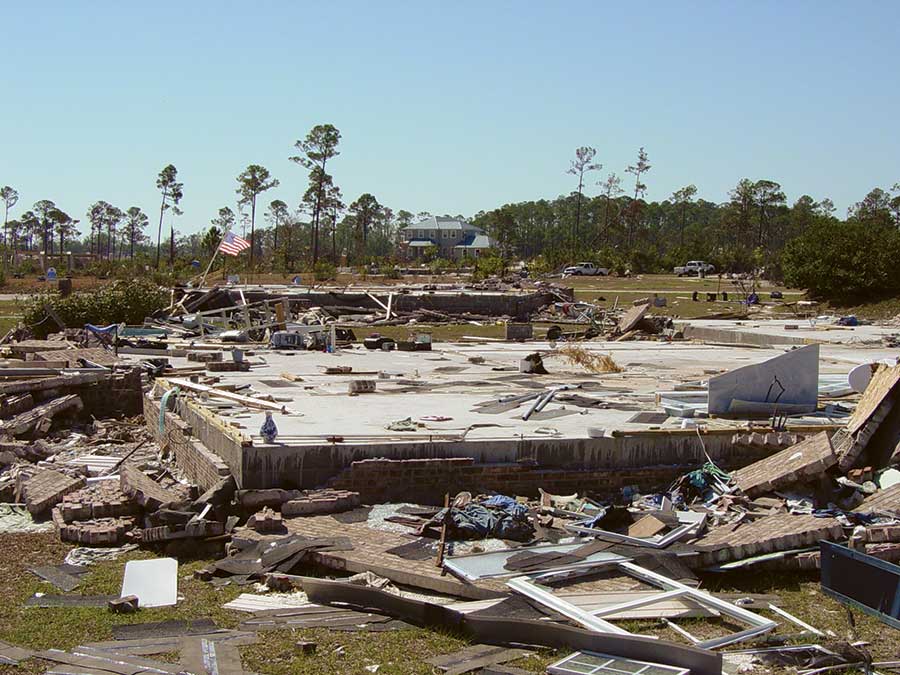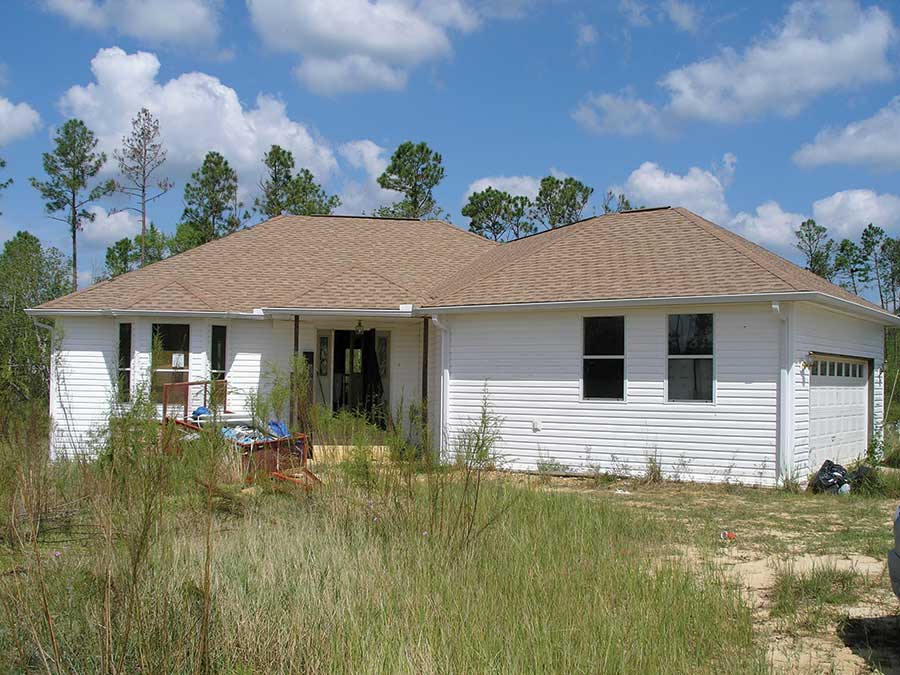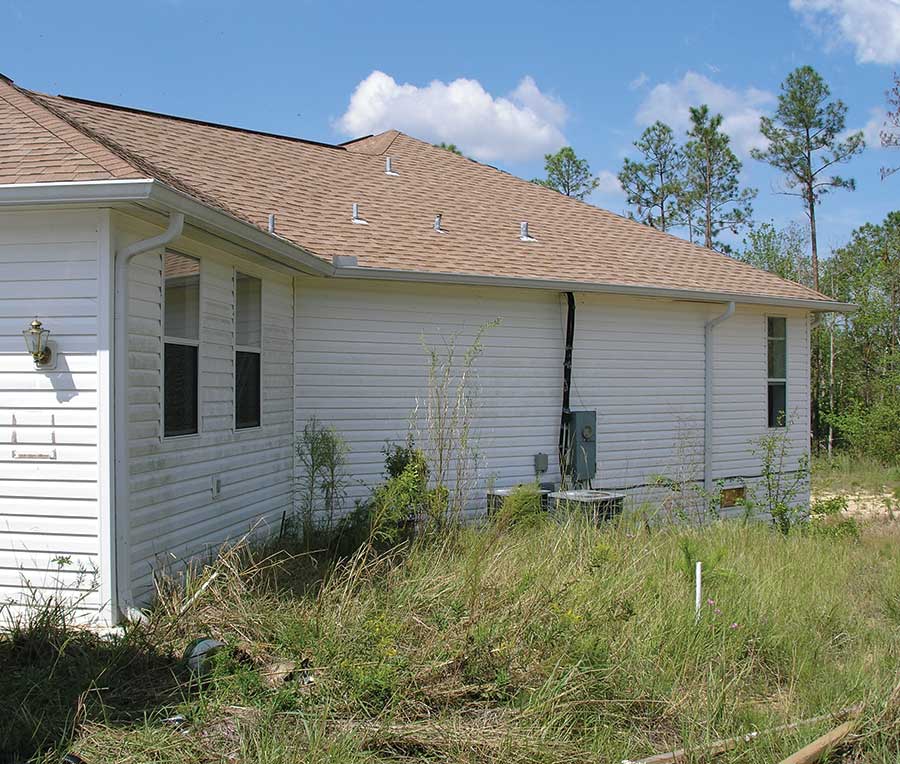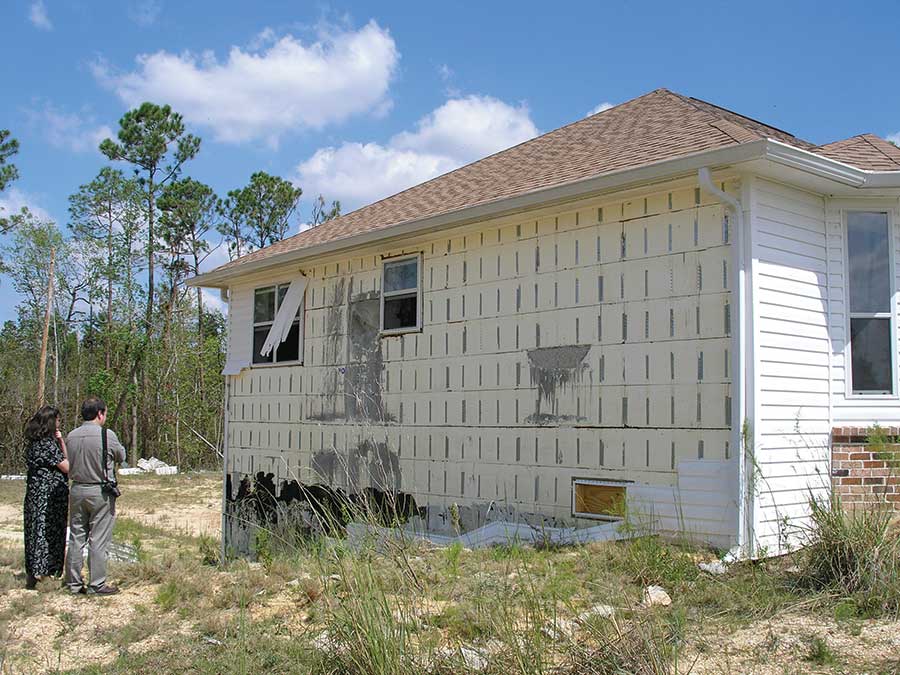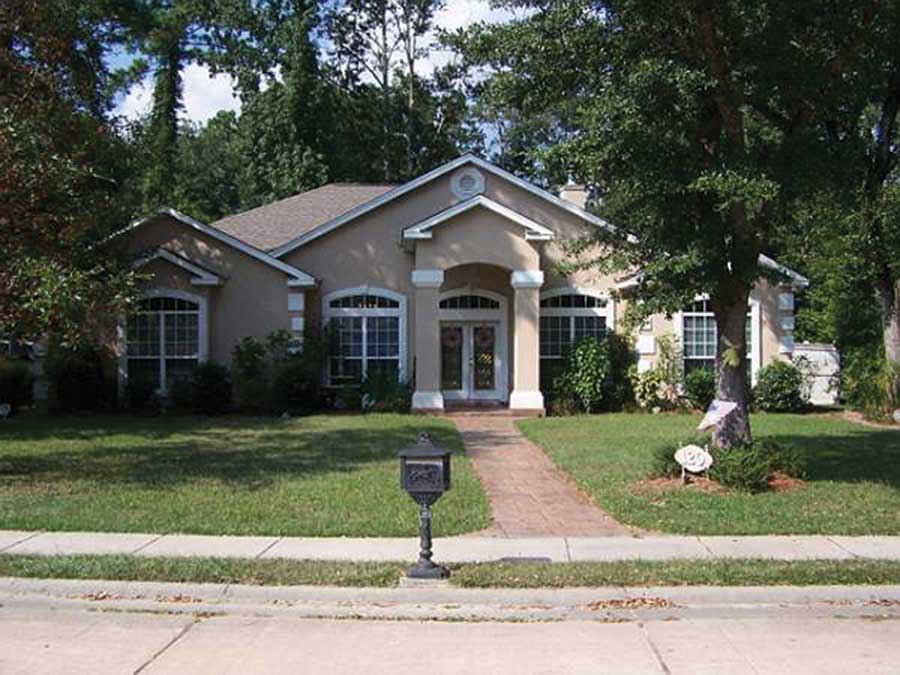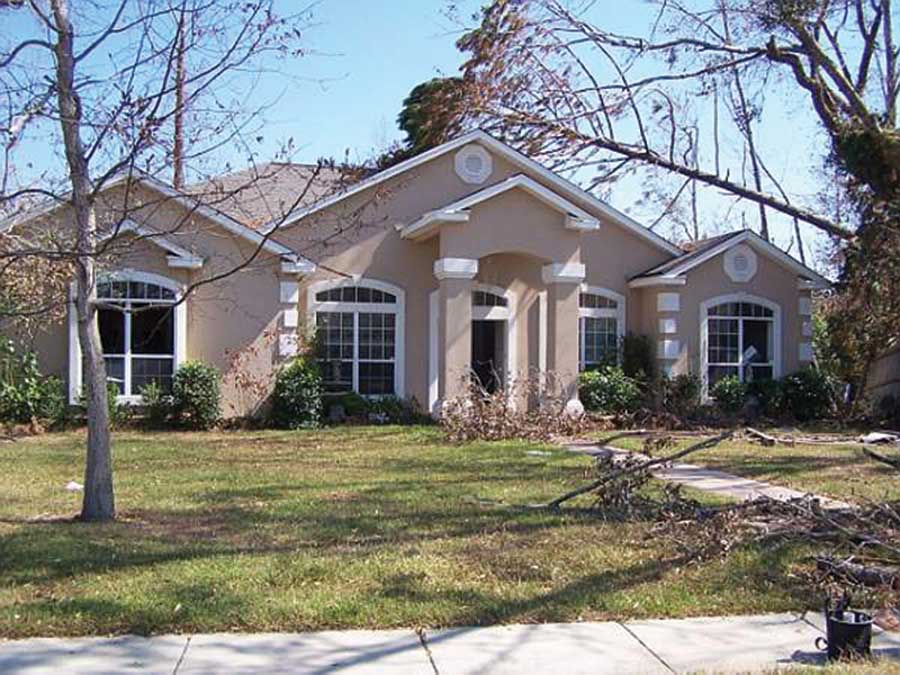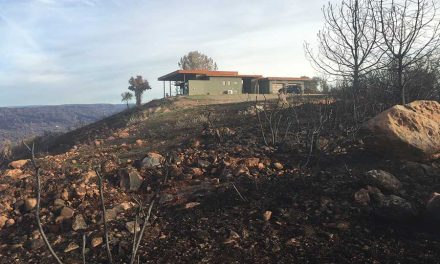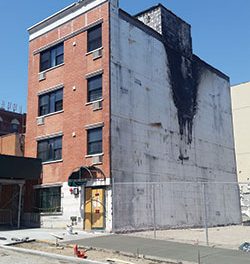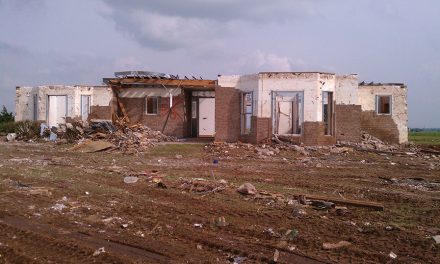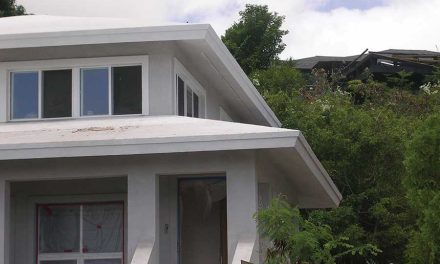This ICF home built with NUDURA survived unscathed when Hurricane Ivan reduced others in the neighborhood to a pile of sticks.
Two years after the record devastation caused by Hurricane Katrina, government agencies, code officials, and other policy makers are still debating how to ensure new construction in hurricane-prone areas is safe.
Homeowners and insurance executives are also anxious to find more durable building methods, as frame construction is relatively weak even when built to the new, stronger codes.
Perhaps the best option is to build with insulating concrete forms, or ICFs. Hurricanes pose three main threats to a structure—strong winds, storm surge, and flying debris—and ICFs stand up well to all three.
Strong Winds and Storm Surge: ICFs stand up to hurricane force winds, thanks to the mass of concrete in the exterior walls. A typical 16”x48” ICF, when filled with concrete, weighs about 400 pounds (6” core), or 75 pounds per square foot of wall. That’s heavy enough to withstand even the strongest winds. Concrete walls are also a superior choice for withstanding storm surge; breakwaters and sea walls around the world are made from the material.
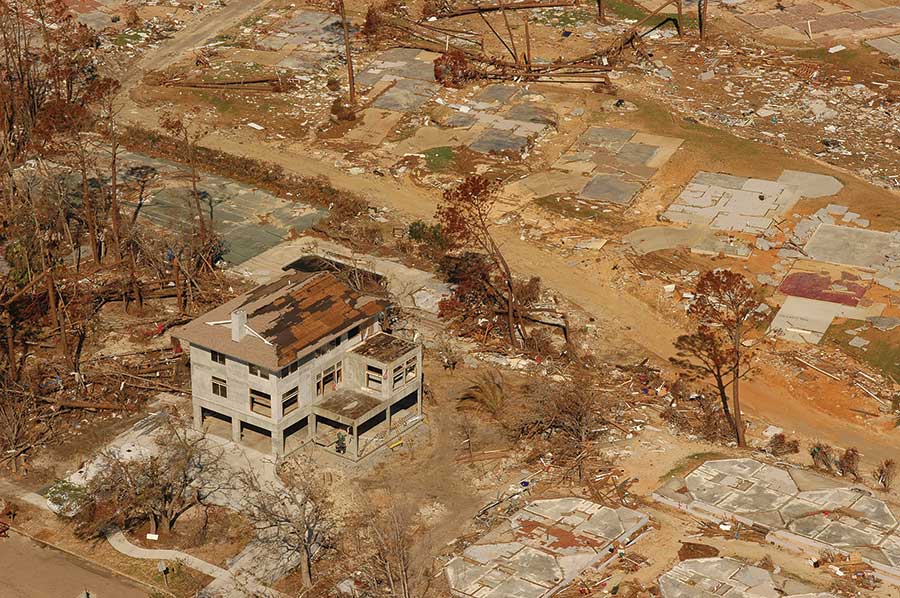
The Sundburg ICF home in Pass Christian, Miss. was literally the only thing left standing after Katrina’s 22-ft tidal surge wiped away everything else.
ICF structures have another advantage: They are integrally tied to the footing or foundation slab with structural reinforcing steel. While frame walls use hurricane ties and/or anchor bolts to meet code minimums, ICF wall-footing connections are stronger by a factor of ten. Sometimes, the walls are poured monolithically with the footing, eliminating even the cold joint.
Likewise, all of the wall components above the footing are connected in a solid monolithic mass, eliminating flex, fatigue, and weak points. Photographs taken after Katrina prove the point dramatically: Often, a battered ICF home stands relatively intact, even when the neighboring homes have been swept away or reduced to a bare slab.
One area of concern for code officials and the insurance industry is the roof attachments; it does little good to have hurricane-proof walls if the roof is compromised and belongings get ruined in the torrential rain. Once again, ICF homes have more hurricane-resistant alternatives available than other building methods.
Traditional roof trusses fastened into concrete are extremely sturdy. ICF Connect makes a series of fasteners specifically designed for this application. And ICFs are strong enough to support the most durable roofing option, solid concrete.
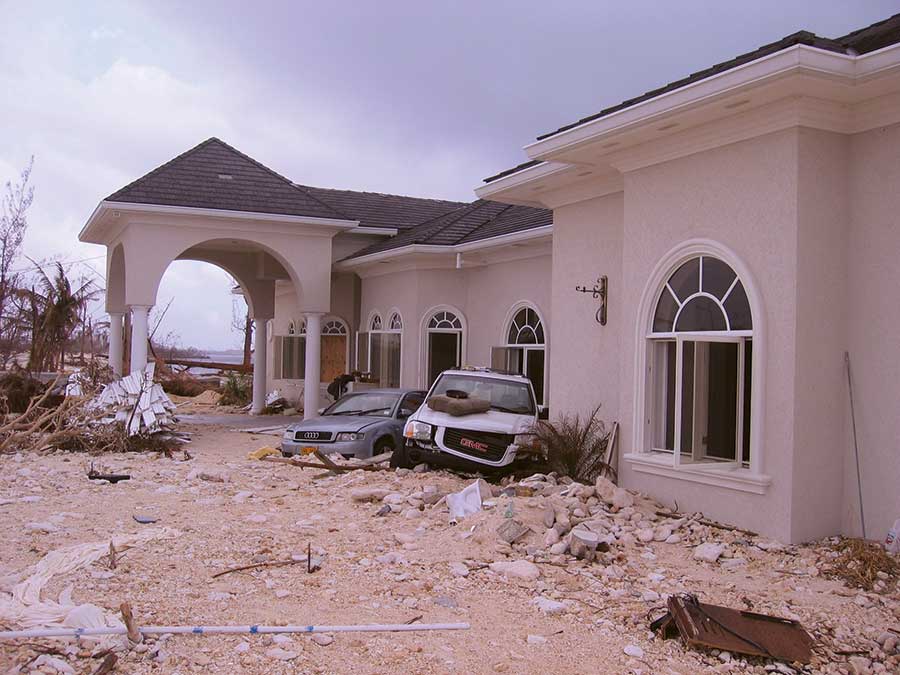
The hurricane that hit this Cayman Island ICF home destroyed cars and nearby buildings, but the house stood strong, even with cars pounding against it like battering rams.
Flying Debris: The third major threat from hurricanes is flying debris. Dramatic photos show sheets of plywood skewering palm trees. Boards literally become missiles, and can puncture even brick walls.
Scientists at Texas Tech University have studied this issue extensively. In one experiment, eight-foot-long 2×4 studs were shot at various wall assemblies. They easily penetrated wood- and steel-frame walls at 50 mph. At 70 mph, they penetrated brick veneer. But nothing penetrated ICFs, even at 100 mph. (See a video of the tests at www.icfmag.com.)
The report concludes, “The strength and durability of concrete walls offer unmatched resistance to the devastation of major storms. Concrete homes are less likely to suffer major damage from debris than conventionally framed houses.”
“The Best Wall Possible”
“Homes built with ICFs [are] sustainable structures capable of withstanding extreme weather conditions,” confirms Dr. Ronald Zollo. Zollo is a professor of civil and architectural engineering at the University of Miami and a licensed professional engineer. He led the team that surveyed the damage of 1992’s Hurricane Andrew.
Zollo says ICFs are stronger than competing concrete systems because of the concrete cure time and the monolithic structure of the wall. “It’s not an assembly of smaller components,” he says. “You aren’t dealing with fatigue issues, loosening of the structure, and deterioration. You have continuity throughout the structural system.”
“Homeowners and builders,” he continues, “need to move away from traditional structures that cannot withstand the type of lateral forces that extreme weather, such as hurricanes, can place on a home. The strongest wall is a monolithic concrete wall, and if we’re going to build a poured wall, let’s make it the best poured wall possible, and that wall is ICF.”
No Added Cost
Significantly, ICF construction does not cost much more than frame construction, and is often cheaper than CMU. Layne Thompson, an ECO-Block distributor in Desdin, FL, points out that wood-frame or concrete block construction requires significant work to meet hurricane-resistant standard, while “ICF walls are inherently stronger with no extra effort. There is no extra cost in the wall.”
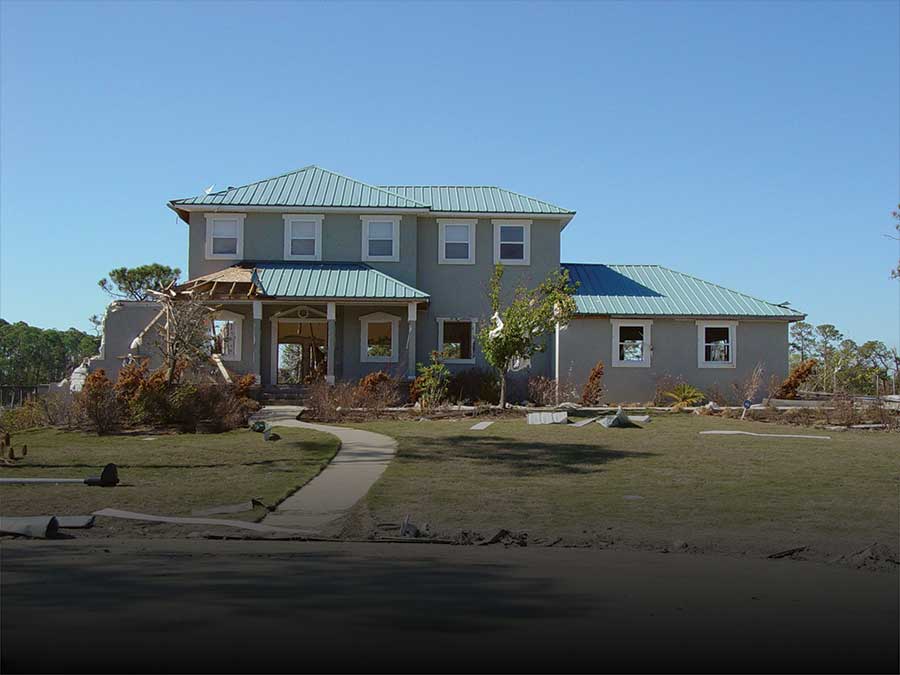
Hurricane Katrina caused some minor porch roof damage on this ICF home, but it fared significantly better than those next door
Adam Vodonavich, owner of ICF Concepts, is rebuilding Southern Louisiana one structure at a time, using Logix ICFs. He says, “The benefits, especially down here in the South, make the decision a no-brainer.”
Rebuilding Update
Vodonavich says despite ICFs’ benefits, “the rebuild [on the Gulf Coast] has been slow, and it continues to be slow.”
“It’s taken a long time for insurance claims to trickle in and for FEMA to put their new flood maps together,” he says.
One of the major challenges is getting insurance at a reasonable rate. “Right now, there is no one willing to insure anything built in the State of Louisiana,” says Vodonavich. While no private firms will offer insurance, Vodonavich says the “insurer of last resort,” government-sponsored Louisiana Citizens Property Insurance Corp. will, but the rates are extremely high. He claims insurance on a $200,000 property would cost $6,000-$7,000 annually.
Wendy Davidoff, marketing manager at Quad-Lock Building Systems also reports rebuilding is “going at a snail’s pace.” “The second disaster in the Gulf Zone is the federal assistance programs – no one can get the money secured to start their projects,” she says.
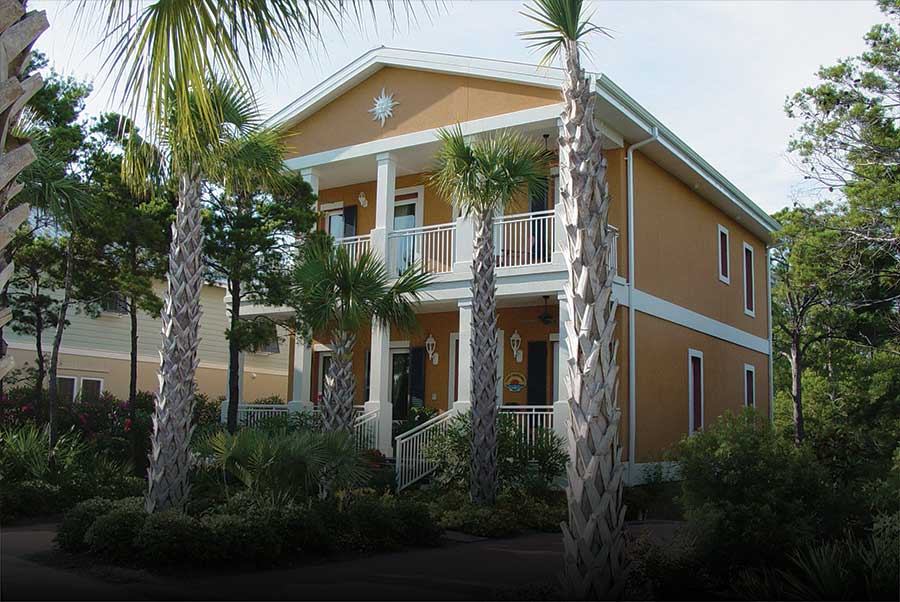
ICF homes like this one, built to match the regional architecture, can protect lives and belongings from the ravages of nature.
Patrick Murphy, president of American PolySteel, predicted a slow rebuild when interviewed in last January’s industry forecast article. “Because of the scale of the disaster, it’s going to be a generational rebuilding process that takes 10 to 20 years,” he said at the time. “But ICFs are making a significant inroad, and we’re still in just the early stages of rebuilding.”
Signs are very positive for ICFs in the long run. “Many people that wanted to rebuild have had to wait for a year or two for FEMA to tell them where,” says Vodonavich, “so they had a chance to get educated. Most people here have educated themselves about ICFs, and all the hard work we did after Katrina is coming back 10-fold.”
“All the architectural/engineering firms in the area are backed up 6 months now,” he continues. “I probably have 36 homes in various stages of construction right now and three sizable commercial jobs, one of which is a 44-unit condo… For every home I put down, I get three more after it just from people going by and seeing it.”
Attempts to encourage ICF construction through insurance discounts, building codes, or legislation have yielded no results so far. Large homebuilders have also been hesitant to transition to ICFs. But in the meantime, there are opportunities for ICF contractors.
“Right now, we’re really focusing on educating the homeowners,” says Vodonavich. “If the homeowner insists on it, the architects and engineers are going to follow it. I think that how quickly we can get people educated will determine the level of growth that we have.”
Case Study #1
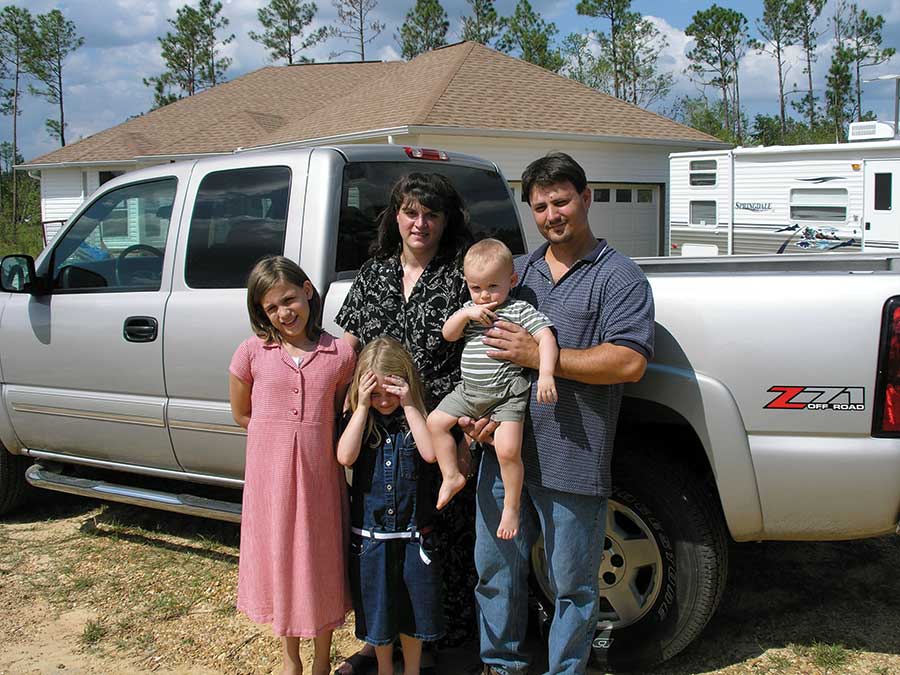
The home, built with PolySteel Insulating Concrete Forms, would be put to the test in late 2005 when it took a direct hit from Hurricane Katrina. The Wilkerson’s had not yet actually moved in, but were living in a nearby apartment when the storm, rapidly gaining in strength, turned directly towards the Mississippi Gulf Coast.
“My wife was freaking out,” says Ricky. “She wanted to leave, and I said, ‘it’s too late to leave’… Once I saw the size of the storm and the winds, I said, ‘we’re going to the bunker’—that’s what I call this house—and she said okay, I feel safe there.”
With the newscasts reporting offshore winds in excess of 160 mph, they headed to the still unfinished home, along with three other families they’d invited.
“At 5:30 [a.m.] my wife woke me up because the power was out,” he says. “By 8 o’clock, it was a full-fledged hurricane. The trees outside were kissing the ground—not waving, but laying down.”
“It sounded like a helicopter landing right beside you,” says Tish. “The pressure in the house, it felt like my ears were going to explode. It felt like you were in a plane.”
She recalls looking out the window at a neighbor’s mobile home. “I saw the side of the trailer just go. It just flew away. You could see inside their kitchen, their couch, their beds.”
“Inside it was so calm,” she continues. “Outside you’d see a piece of siding come flying by, but inside, nothing was moving, nothing was shaking.”
“We didn’t experience any of that,” says Ricky. “We just sat back. In fact, at one point, my children said, ‘Mom, why do we have to be in here?’” The kids were staying in the daylight basement for additional safety, but even upstairs the home was remarkably solid. “A friend stayed upstairs in the kitchen,” says Tish, “asleep.”
“We had no idea how bad the storm was, no idea,” she says.
“We topped that hill, [after the hurricane] and houses were completely gone.”
Their ICF home, on the other hand, was nearly unscathed. The only damage was an area of vinyl siding that had been stripped away in the ferocious winds. The home has since been refinished with an acrylic stucco to make it even more storm resistant. It was only after the area of siding was gone that Ricky discovered which brand of ICF his home had been built with. Seeing the PolySteel logo and a toll-free number, he called them up to tell of his remarkable experience.
“I felt extremely safe,” says Ricky. “I could hear the wind outside, but inside nothing moved. Everything stayed just as it should have.”
The Wilkersons say many of their friends are now looking at ICFs, and Ricky reports it’s “the only thing I’m going to live in from now on.” He has already used PolySteel to complete some smaller projects, and is considering building a home on an adjoining lot with PolySteel as well.
“South of I-10, this is the only type of house I’d live in,” he says. “When you rebuild, this is what you need to use. I don’t know what the cost difference is, but it would save insurance companies millions of dollars. They ought to be promoting this stuff, because it would save them millions and millions of dollars.”
Case Study #2
Withstanding Katrina’s Fury
Six hours of wind failed to move concrete home.
While many of their neighbors are still living in FEMA trailers, the residents on Oaks Blvd. are moving back because most of the houses were built with ICFs and all were built to meet the 2000 building codes.
Ed and Ilene Catoire (pronounced Cat-wa) had built their one–story 2,490 sq. ft. house in Bay St. Louis, Miss., several miles from the coast. Ed had been through two previous hurricanes so when Katrina threatened, the Catoire’s evacuated.
After the wind subsided and the main roads reopened, Ed drove back to see what was left. A local policeman told him to turn around. According to the officer there were no houses left standing in the area. But Ed said he wanted to see for himself.
“We literally cut our way back there with chain saws,” Catoire said. The frame houses were just gone. The brick houses had shifted off their foundations. Even those built to the latest codes had been moved.
The Catoire’s home, on the other hand, stood firm. The windows and doors, however, were destroyed by winds that ranged from 175 to 225 miles per hour for six hours as the hurricane passed directly over Bay St. Louis.
The hurricane also created a massive storm surge, a 10.5-foot wall of water that destroyed the houses the wind hadn’t yet blown away.
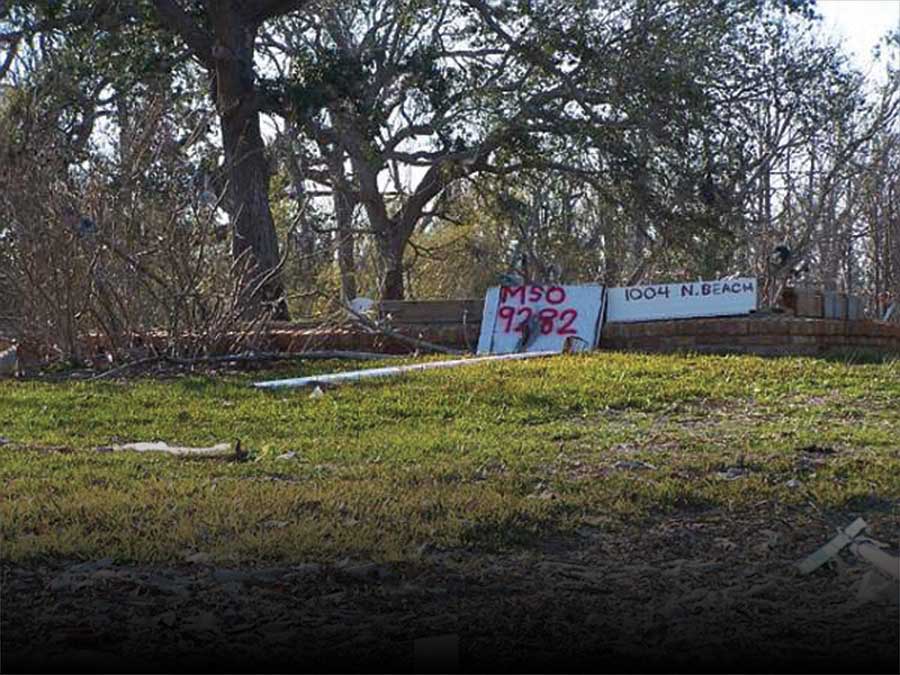
The Catoire home in Bay St. Louis, Miss., stood strong while others in the town were completely obliterated.
“The only homes intact were the 30 in our subdivision,” says Catoire. “All the houses were built to meet hurricane codes enacted in 2000, and many of those were built with Reward Wall Systems and other ICF systems,” he said.
The home did suffer significant water damage. “The outside walls were sound and undamaged, but the roof had substantial damage from the nine trees that fell on the house,” Catoire said. Despite being more than 4 miles from the coast, it was also flooded with more than 10 feet of seawater.
“We lost all of the interior of the house,” Catoire said. The water rose above the doorframes and soaked the sheetrock.” The exterior stucco finish was damaged by trees being blown into
the house.
Built in 2000 by Art Young Lifestyle 2000, the home cost about $20,000 more to build than conventional wood construction at that time. But according to Catoire the additional up-front cost was worth it. He noted that frame houses with stucco exteriors had significant mold damage. But mold didn’t grow on the ICF houses.
Ed and Ilene Catoire moved back into their home on February 1, 2007, 17 months after Katrina displaced them. Of the 30 homes in the mostly ICF subdivision, about half the families have returned. Neighboring developments are not so fortunate. Concrete slabs or pylons mark most home sites and many residents are living in tiny FEMA trailers.
Ed is grateful the Reward Wall ICFs “did what they were supposed to do.” They withstood the fury of Katrina.

